Oprah's Top 20 Moments
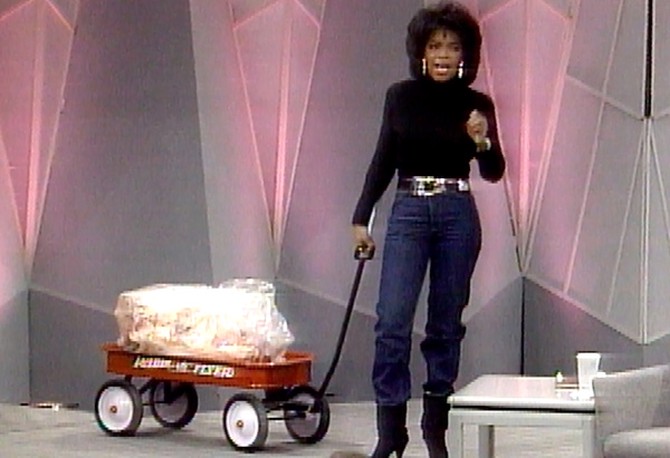
My 67-Pound Weight Loss (1988)
By the time I heard about Optifast, in 1988, I'd tried just about every diet known to womankind. I thought a liquid diet would be my final answer. I'd saved a pair of Calvin Klein jeans from my days of working in Baltimore, and my goal was to get back into those jeans.
For four solid months, I didn't eat a single morsel of food. When I started Optifast in July 1988, I was at 212 pounds. By fall, I weighed 145 pounds. Wearing my size 10 jeans, I pulled a wagon full of fat—representing the 67 pounds I'd dropped—onto the stage.
What I didn't know was that my metabolism was shot. Two weeks after I returned to real food, I was up 10 pounds. Since I wasn't exercising, there was nothing my body could do but regain the weight. As my friend Maya Angelou often tells me, "When you know better, you do better."
Seventeen years after that show, I know a whole lot better.
For four solid months, I didn't eat a single morsel of food. When I started Optifast in July 1988, I was at 212 pounds. By fall, I weighed 145 pounds. Wearing my size 10 jeans, I pulled a wagon full of fat—representing the 67 pounds I'd dropped—onto the stage.
What I didn't know was that my metabolism was shot. Two weeks after I returned to real food, I was up 10 pounds. Since I wasn't exercising, there was nothing my body could do but regain the weight. As my friend Maya Angelou often tells me, "When you know better, you do better."
Seventeen years after that show, I know a whole lot better.
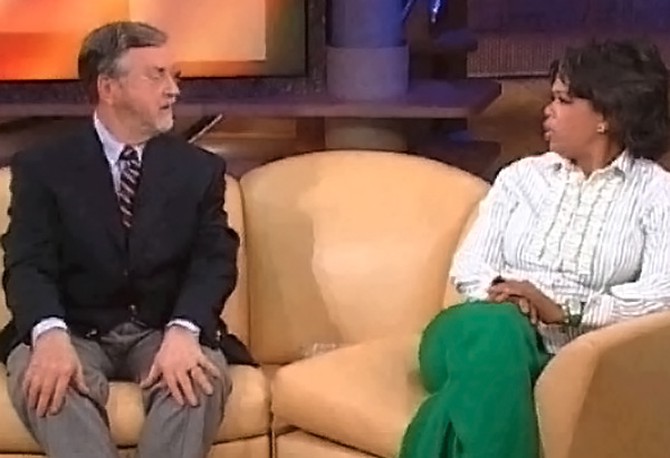
The Imago Theory (1988)
My big lightbulb moment on relationships came the first time I talked with marriage therapist Harville Hendrix. He introduced me to his Imago Theory—in essence, he says it's not a coincidence that you've attracted your partner; that person is there to help you do the work of recovering from old wounds.
That show changed me. I saw relationships not solely as the kind of romantic pursuit our society celebrates but as a spiritual partnership that's meant to change how you see yourself and the world.
That show changed me. I saw relationships not solely as the kind of romantic pursuit our society celebrates but as a spiritual partnership that's meant to change how you see yourself and the world.
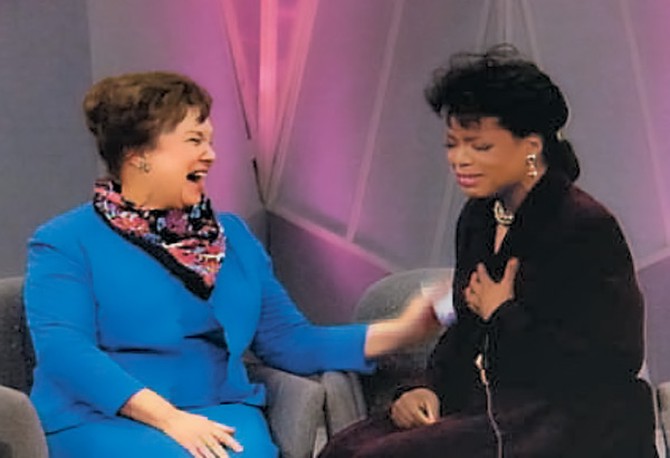
A Visit from My Fourth-Grade Teacher (1989)
One of the defining moments of my life came in fourth grade—the year I was a student in Mrs. Duncan's class at Wharton Elementary School in Nashville. For the first time, I wasn't afraid to be smart, and she often stayed after school to work with me. I thought I would one day become a fourth-grade teacher.
Sixteen years ago, my producers surprised me by bringing in Mrs. Duncan as a guest on the show. I hadn't seen her since grade school, and suddenly, I'm reading the teleprompter: "Welcome, Mary Duncan."
My eyes filled with tears, and I said, "Mrs. Duncan had a name! Her name is Mary." As a child, I hadn't even considered that Mrs. Duncan might have had a life beyond our class. It was in her class that I really came into myself. After all these years, I could say thank you to a woman who had a powerful impact on my early life.
Sixteen years ago, my producers surprised me by bringing in Mrs. Duncan as a guest on the show. I hadn't seen her since grade school, and suddenly, I'm reading the teleprompter: "Welcome, Mary Duncan."
My eyes filled with tears, and I said, "Mrs. Duncan had a name! Her name is Mary." As a child, I hadn't even considered that Mrs. Duncan might have had a life beyond our class. It was in her class that I really came into myself. After all these years, I could say thank you to a woman who had a powerful impact on my early life.
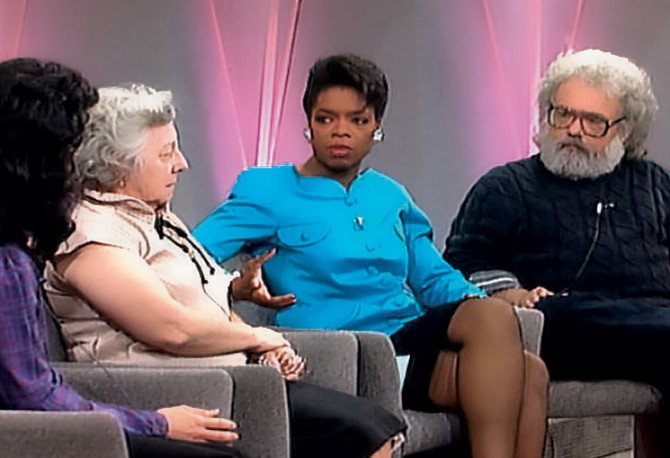
A Mass Murderer Strikes (1989)
I once interviewed a murderer—a guy who'd killed eight people. In the middle of my conversation with him and the families of some of his victims, I had a flash: "I shouldn't be doing this. It's not going to help anybody." That's why we never aired that show.
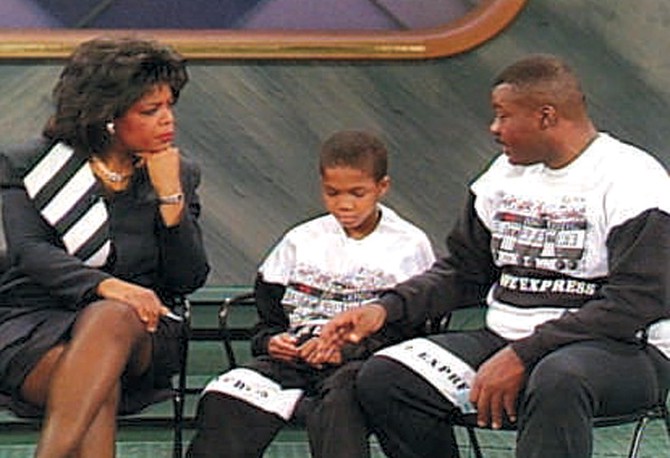
Children Victimized by Crime (1990)
Robert Jones—a boy who became blind when he was 10—has a permanent spot on my list of unforgettable guests. Robert was visiting his grandmother's house when a stray bullet entered his left temple and exited his lower right temple. I asked Robert, "Can you see in your dreams?" After pausing for a few seconds, he lowered his head and finally whispered, "Yes." Bring out the Kleenex!
Years later when Robert was 18, I invited him to return to the show. He had learned to play the piano and had become a songwriter. He would go on to earn a degree from Columbia College—a testament to what can happen when we blow the lid off what's possible in our lives.
Years later when Robert was 18, I invited him to return to the show. He had learned to play the piano and had become a songwriter. He would go on to earn a degree from Columbia College—a testament to what can happen when we blow the lid off what's possible in our lives.
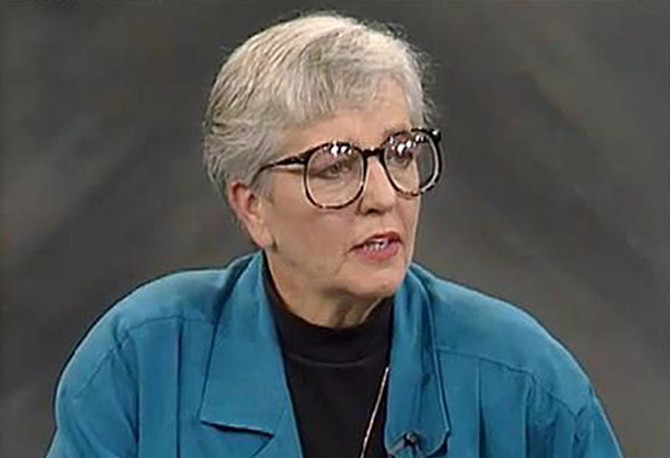
An Exercise in Prejudice (1992)
After the assassination of Martin Luther King Jr., a schoolteacher by the name of Jane Elliott used an exercise to teach her students about racism: She divided the children by eye color. Thirteen years ago, with her help, I tried the same experiment with our audience.
When people arrived at Harpo, we separated those with blue eyes from those with brown eyes. The blues, who were given a green collar to wear, were sent to a waiting room with no food for two hours; the browns were offered doughnuts and took their seats ahead of all those with blue eyes. Once they were in the studio, Jane Elliott explained what her "study" had proved: Blue-eyed people were obviously less intelligent than brown-eyed people.
The audience actually became convinced that Jane Elliott was telling the truth. The blues began to revolt, trying to persuade me that they were just as intelligent as the browns; the browns sat by smugly, obviously beginning to believe that they'd always been superior. The purpose of the experiment was to demonstrate how easily human beings can be taught to discriminate based on arbitrary features.
If an hour's worth of propaganda can convince 300 audience members, what other lies might we fall prey to? That was Jane Elliott's point exactly.
When people arrived at Harpo, we separated those with blue eyes from those with brown eyes. The blues, who were given a green collar to wear, were sent to a waiting room with no food for two hours; the browns were offered doughnuts and took their seats ahead of all those with blue eyes. Once they were in the studio, Jane Elliott explained what her "study" had proved: Blue-eyed people were obviously less intelligent than brown-eyed people.
The audience actually became convinced that Jane Elliott was telling the truth. The blues began to revolt, trying to persuade me that they were just as intelligent as the browns; the browns sat by smugly, obviously beginning to believe that they'd always been superior. The purpose of the experiment was to demonstrate how easily human beings can be taught to discriminate based on arbitrary features.
If an hour's worth of propaganda can convince 300 audience members, what other lies might we fall prey to? That was Jane Elliott's point exactly.
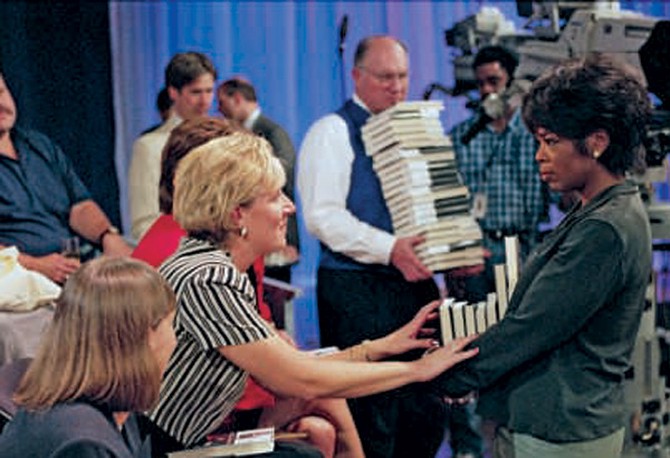
Oprah's Book Club (1996)
A year after I launched the book club, a woman who appeared on the show said something I'll never forget: "Before I joined the book club, I had never read an entire book."
Reading has always been an open window to other worlds. Had I not been taught to read at an early age, I'd be an entirely different person. Thanks to books, I knew there was another kind of life. The chance to give another person that same gift? That was one of my proudest moments.
Get the complete list of past Oprah's Book Club selections.
Reading has always been an open window to other worlds. Had I not been taught to read at an early age, I'd be an entirely different person. Thanks to books, I knew there was another kind of life. The chance to give another person that same gift? That was one of my proudest moments.
Get the complete list of past Oprah's Book Club selections.
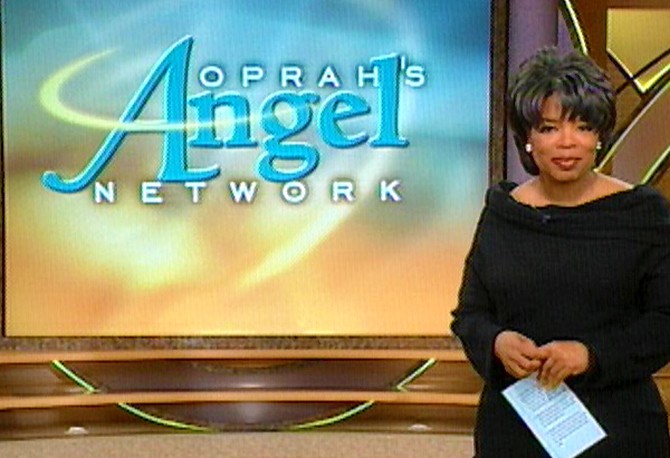
The Small Change Campaign (1997)
One season my producers came up with a brilliant idea for how we could mobilize viewers to give to others. We created the world's largest piggy bank. Viewers from every corner of the country collected their loose coins and sent them to our Angel Network so we could give 50 students a chance to attend college. By the end of that season, our piggy bank had $3.5 million.
One of my happiest days on television was seeing the astonishment on those students' faces when they heard they'd have an opportunity that would forever change their families—proof that what we call small can make an immeasurable difference.
One of my happiest days on television was seeing the astonishment on those students' faces when they heard they'd have an opportunity that would forever change their families—proof that what we call small can make an immeasurable difference.
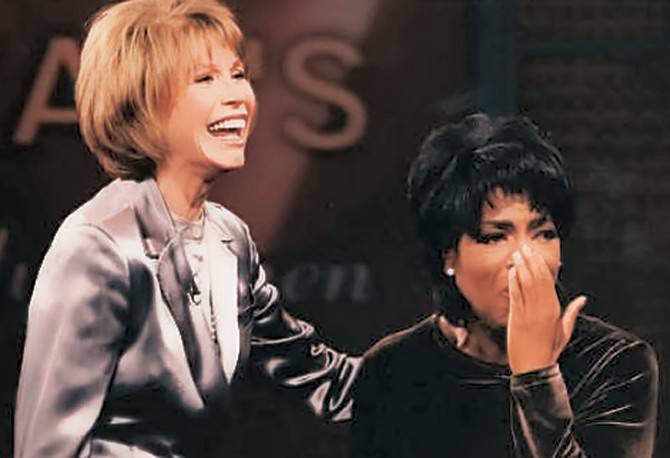
Favorite Celebrity Women (1997)
Early in my television career, I was inspired by one woman whose show I never—and I mean never—missed. Every week, I tuned in to watch Mary Tyler Moore "turn the world on with her smile." I once even performed a spoof of the opener of that sitcom!
When Mary heard about my spoof, she surprised me with a live call on the air. "Mary," I said, beside myself in shock, "I can't believe it's really you!"
"Now, listen," she said with a laugh, "about that tossing the hat in the air, Oprah. That's my shtick. I don't like anyone messing with that."
"Mare, if you would have shown up here," I said, "I'd have just died."
Right then, the Mary Tyler Moore theme song began to play, and Mary walked right out onto the stage. I was a basket case! I am still in awe of a woman whose life is an example of grace and sensitivity—and whose appearance that day gave me the surprise of a lifetime.
Find out how Oprah's crew recreated sets from The Mary Tyler Moore Show!
When Mary heard about my spoof, she surprised me with a live call on the air. "Mary," I said, beside myself in shock, "I can't believe it's really you!"
"Now, listen," she said with a laugh, "about that tossing the hat in the air, Oprah. That's my shtick. I don't like anyone messing with that."
"Mare, if you would have shown up here," I said, "I'd have just died."
Right then, the Mary Tyler Moore theme song began to play, and Mary walked right out onto the stage. I was a basket case! I am still in awe of a woman whose life is an example of grace and sensitivity—and whose appearance that day gave me the surprise of a lifetime.
Find out how Oprah's crew recreated sets from The Mary Tyler Moore Show!
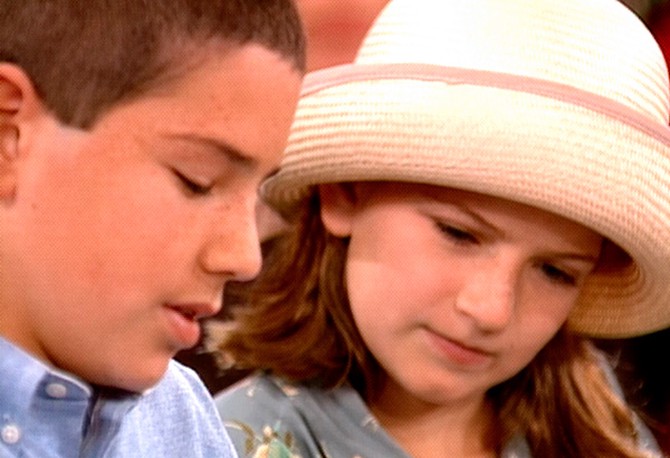
Losing a Parent (1997)
Kate and Zach, sister and brother, lost their mother a few months before they appeared on the show. Because their mom, Kathleen, had known she was dying, the family had decided to spend time taking trips and connecting as a family while she was still alive. I asked Kate what her favorite moment from that year had been.
"One day when I came back from swimming," she said, "my mom was in bed. She said, 'Kate, would you get me a bowl of cereal?' I said, 'Sure.' A week before she died, I was in my parents' room. I said, 'Mom, would you wake me up if you go downstairs to get a bowl of cereal?' So at 2 in the morning, we had a bowl of Cheerios together."
Here's what I found so powerful about Kate's story: They'd been everywhere from Palm Springs to Disney World, but what Kate remembered was a simple, intimate moment of connection. My producers and I call it the Cheerios moment.
"One day when I came back from swimming," she said, "my mom was in bed. She said, 'Kate, would you get me a bowl of cereal?' I said, 'Sure.' A week before she died, I was in my parents' room. I said, 'Mom, would you wake me up if you go downstairs to get a bowl of cereal?' So at 2 in the morning, we had a bowl of Cheerios together."
Here's what I found so powerful about Kate's story: They'd been everywhere from Palm Springs to Disney World, but what Kate remembered was a simple, intimate moment of connection. My producers and I call it the Cheerios moment.
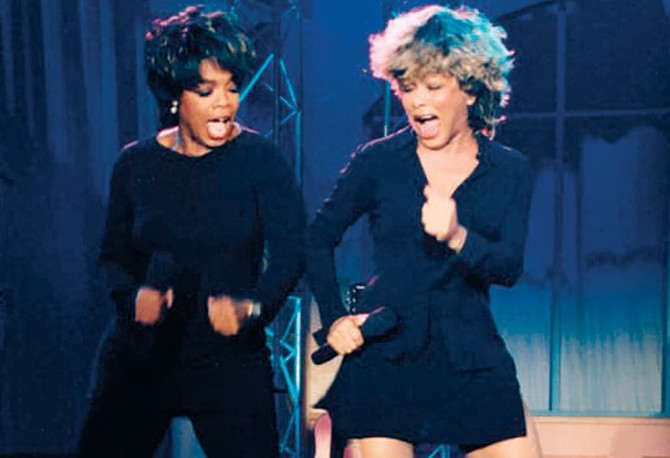
Wildest Dream Tour with Tina Turner (1997)
Even with all the wonderful experiences I've had, there was always one small thing I had dreamed of: singing onstage with Tina Turner. I finally got a chance to do it when the show went on tour with Tina. I was so nervous, especially because when we'd practiced our dance moves backstage, Tina looked at me and said, "You really don't have any rhythm, do you?" During the performance, I could hardly concentrate on what was actually happening. In the last few moments of the song, I remember saying this to myself: "Okay, girl, this is about to be over—so you'd better enjoy it."
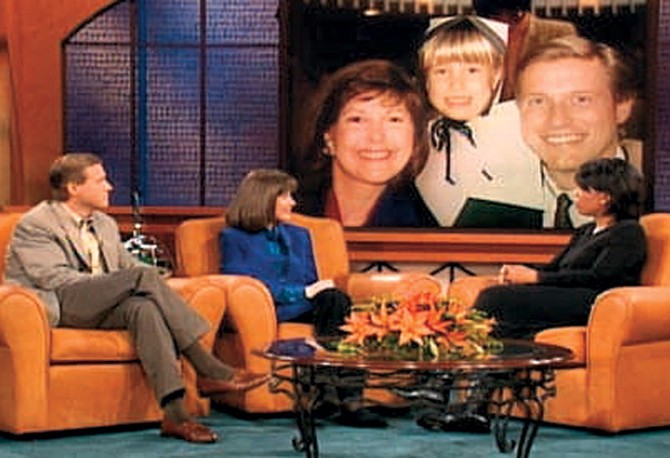
A Mother Leaves a Legacy (1998)
When Erin Kramp was dying of cancer, she came up with a brilliant idea about what to leave her husband, Doug, and her 6-year-old daughter, Peyton. The day Doug and Erin appeared on the show, they shared a portion of the video diaries she'd recorded. On the tapes, Erin gave Peyton advice on everything from how to choose makeup ("Try to find makeup that looks natural, like you're not wearing any") to how to choose a husband ("Pick a very nice guy who has a backbone"). She left a gift for Peyton to open on her 16th birthday.
I've often called mothers the greatest spiritual teachers in the world. Erin was one of the bravest.
I've often called mothers the greatest spiritual teachers in the world. Erin was one of the bravest.
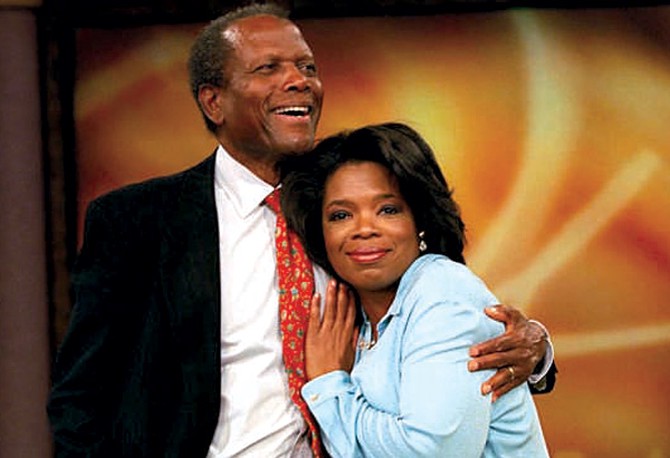
A Conversation with Sidney Poitier (2000)
It was a once-in-a-lifetime interview: The legendary Sidney Poitier visited the show after his autobiography, The Measure of a Man, was first published. His integrity, his commitment to excellence, the gold standard he created for all those who have come since—I have so much love and respect for all that Sidney's life represents. After our interview, I went into the studio's control room and wept.
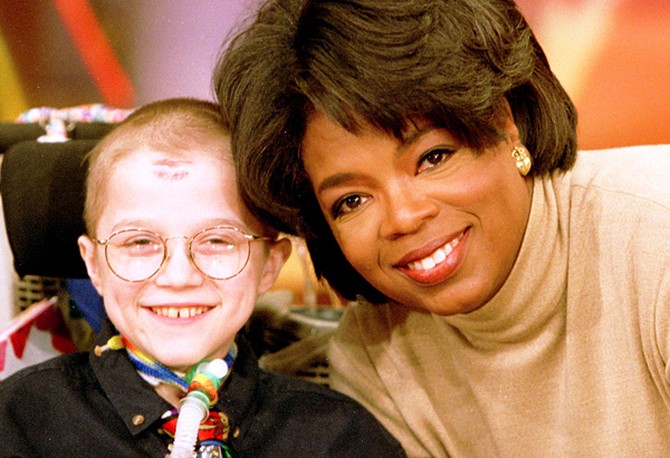
Mattie Stepanek (2001)
I first met my friend Mattie Stepanek nearly four years ago, when he thought he was a goner—he had a rare form of muscular dystrophy that had already claimed the lives of his three siblings and was threatening his. Doctors said that if a sore on the back of his head didn't heal, he'd have to undergo an operation he might not survive. When I asked Mattie what he wanted for Christmas that year, he said, "If it's not too much trouble, pray for me." I and thousands of others did—and 30 days later, Mattie's healing could be explained only as a medical miracle.
Watch a tribue to Mattie
In March 2004, Mattie's condition again worsened, and he never recovered; 13 years after doctors at his birth had predicted Mattie wouldn't make it even a day, he used his light to inspire the millions who saw him on my show. When you lose a loved one, you gain an angel. That is how all those who knew this brave, ebullient and wise boy will remember him.
Watch a tribue to Mattie
In March 2004, Mattie's condition again worsened, and he never recovered; 13 years after doctors at his birth had predicted Mattie wouldn't make it even a day, he used his light to inspire the millions who saw him on my show. When you lose a loved one, you gain an angel. That is how all those who knew this brave, ebullient and wise boy will remember him.
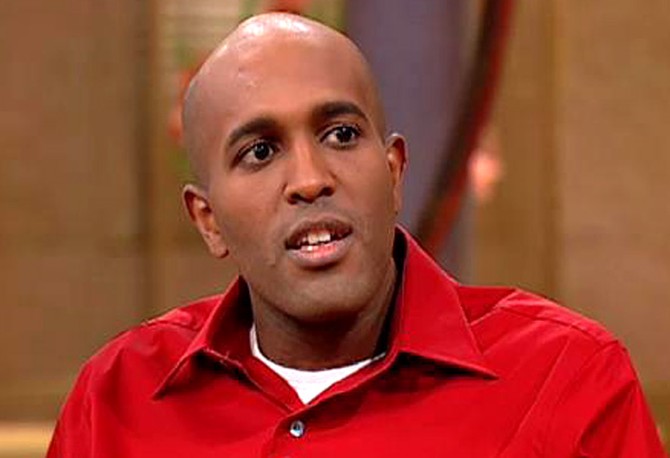
Coming to America (2001)
After an Ethiopian boy named Mawi Asgedom and his family escaped from their war-torn country of Ethiopia, they trekked through the brutal deserts of Africa, then spent years in a refugee camp. They arrived in the United States with absolutely no money. Yet the parents had a dream for their son: Mawi's parents told him that school was the way to do well in this country. So he dedicated himself to his studies and won a scholarship to Harvard University. After I heard Mawi's story on the show, I wouldn't tolerate "can't" from anyone. I'd say, "Mawi walked across the desert. What do you mean it can't be done?" Anything is possible for those willing to make the sacrifice.
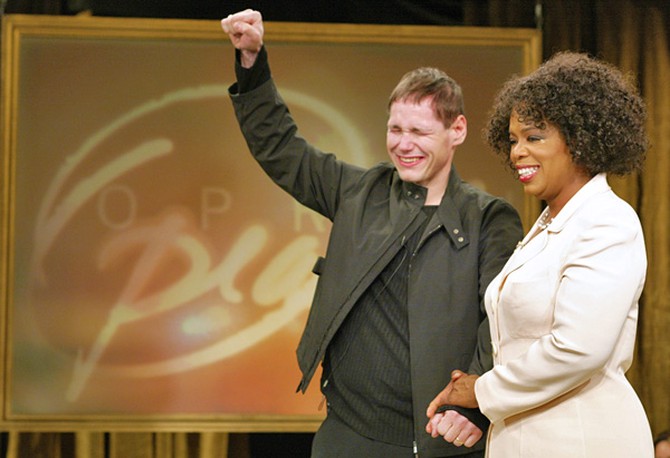
Weight Loss Success Stories (2003)
One of my all-time favorite guests is David Caruso, a man who appeared on our show after he'd lost more than 300 pounds. For years it had been his dream just to sit in a Porsche. So during that show, we brought in a Porsche for him to sit in. The man opened the door and climbed inside, grinning from ear to ear.
Then a few seconds after he got out of the car and walked back toward the stage, I said, "Take a good look at this Porsche, because it is yours!" In the middle of the confetti and screaming, I looked over as he mouthed the words thank you.
One of the reasons that moment was so powerful is that I know what it takes to lose that much weight. Do you know how many carrot sticks you have to eat? What he did was incredible.
Then a few seconds after he got out of the car and walked back toward the stage, I said, "Take a good look at this Porsche, because it is yours!" In the middle of the confetti and screaming, I looked over as he mouthed the words thank you.
One of the reasons that moment was so powerful is that I know what it takes to lose that much weight. Do you know how many carrot sticks you have to eat? What he did was incredible.
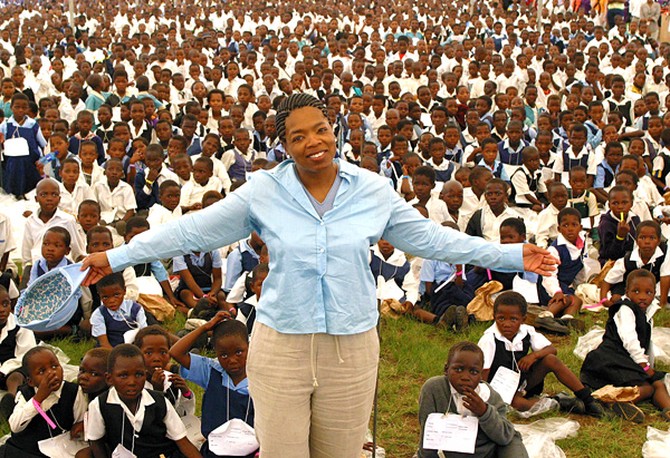
ChristmasKindness in South Africa (2003)
Three years ago, I put a challenge to myself: How could I use the abundance I've been blessed with to offer something meaningful to someone else? That's when I decided to reach 50,000 children in South Africa. Once there, my staff and I headed for several orphanages and created a mini carnival at every stop. The kids, most of them AIDS orphans, were told they were coming to a party—and many had borrowed shoes just to get there.
As the kids entered, I could see their eyes light up and their sorrows fall away while they took in the wonder—jesters, fairies in lavender tulle, and silver bubbles floating everywhere. You could touch the joy they felt that someone had thought of them. In that moment in Johannesburg, I thanked God that I was born to see that kind of happiness.
As the kids entered, I could see their eyes light up and their sorrows fall away while they took in the wonder—jesters, fairies in lavender tulle, and silver bubbles floating everywhere. You could touch the joy they felt that someone had thought of them. In that moment in Johannesburg, I thanked God that I was born to see that kind of happiness.
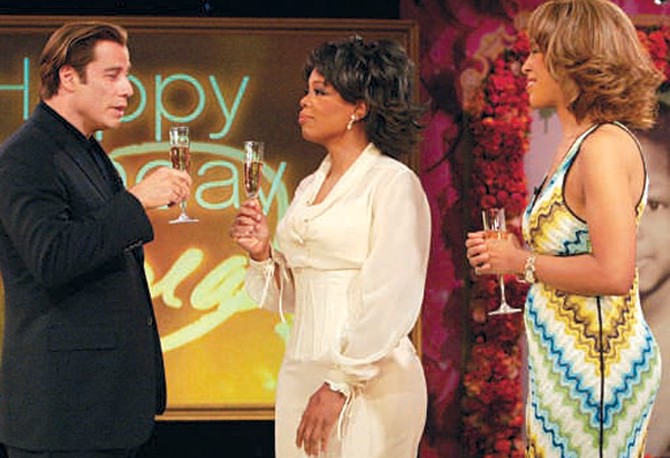
My 50th-Birthday Bash (2004)
As much as I like to surprise other people, I don't like to be caught off-guard myself—and yet my staff managed to pull together a surprise celebration that took my breath away. Truly one of the most unforgettable experiences of my life.
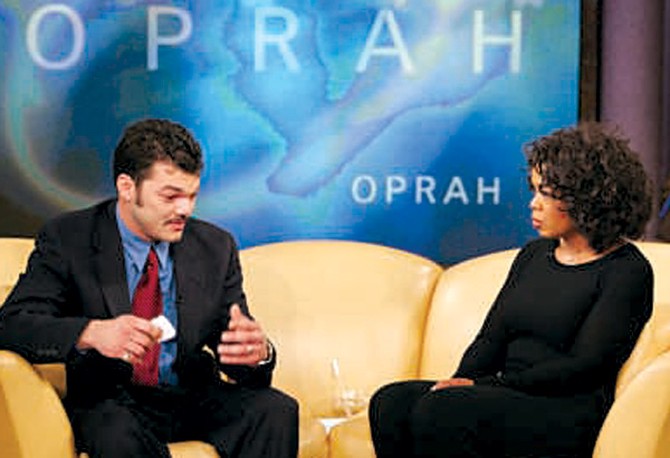
Carbon Monoxide Nightmare (2004)
One morning last summer, a man in a hurry to get to work after his car wouldn't start used cables to jump-start his engine alongside a second car in his garage. A few hours passed before he began to wonder why his wife hadn't made her usual midday call. That evening he came home to a heartbreaking scene: He'd inadvertently left the other car running in the garage. The running car had filled the house with deadly fumes that claimed the lives of his beloved wife and their two dogs.
The day that man sat across from me on the show, his pain was palpable. I knew viewers around the world would be able to sense his agony right through their television sets. There's only one reason to air a show like that: so that those watching can respond to the nudge they've been feeling to finally install a carbon monoxide detector. I believe the universe speaks to us in whispers—little reminders that can actually save lives.
The day that man sat across from me on the show, his pain was palpable. I knew viewers around the world would be able to sense his agony right through their television sets. There's only one reason to air a show like that: so that those watching can respond to the nudge they've been feeling to finally install a carbon monoxide detector. I believe the universe speaks to us in whispers—little reminders that can actually save lives.
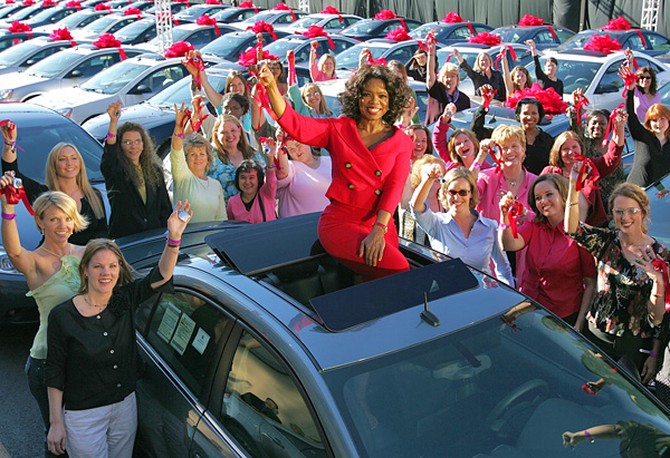
Car Giveaway (2004)
It's the most fun I've ever had during a season premiere—276 audience members and a free Pontiac G6 for every one of them! The audience had been secretly handpicked by my staff in part because each one needed a car. The crowd went berserk. Just for the occasion, we brought in EMTs who were standing by in case someone's heart started palpitating a little bit too quickly. Even now when I think of the shrills of pure joy I heard on the show that day, my own heart rate rises all over again.
The top 11 Oprah Show surprises
Sink your teeth into the show's most mouthwatering recipes
20 questions with Oprah
The top 11 Oprah Show surprises
Sink your teeth into the show's most mouthwatering recipes
20 questions with Oprah
From the October 2005 issue of O, The Oprah Magazine

